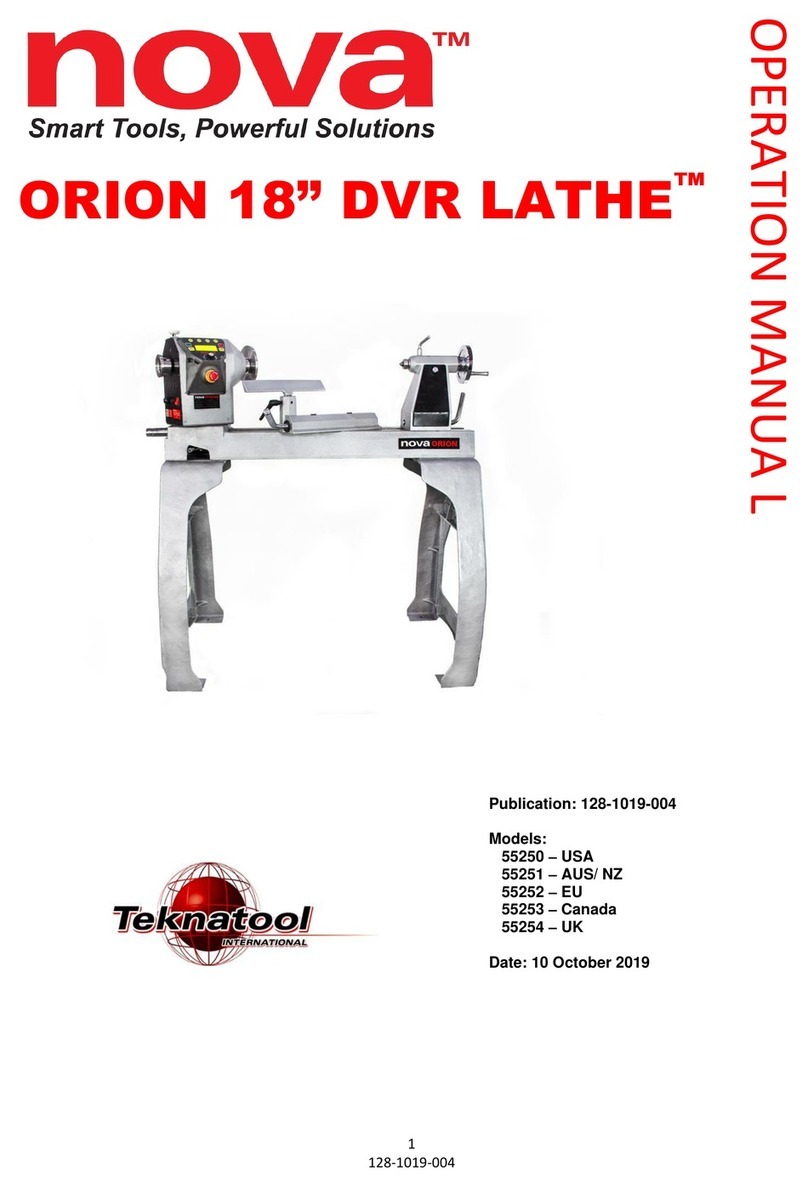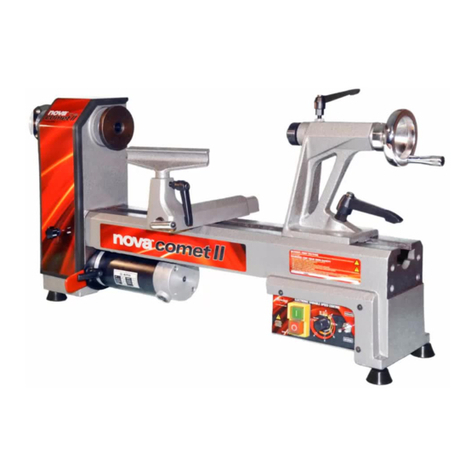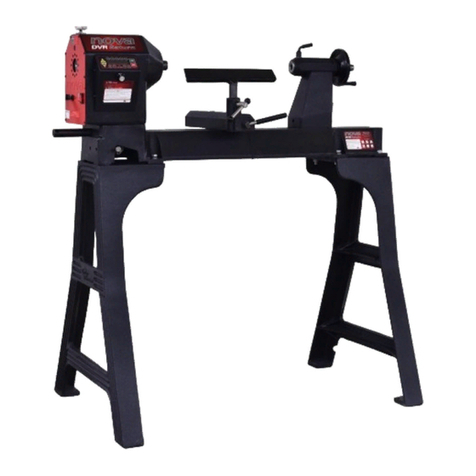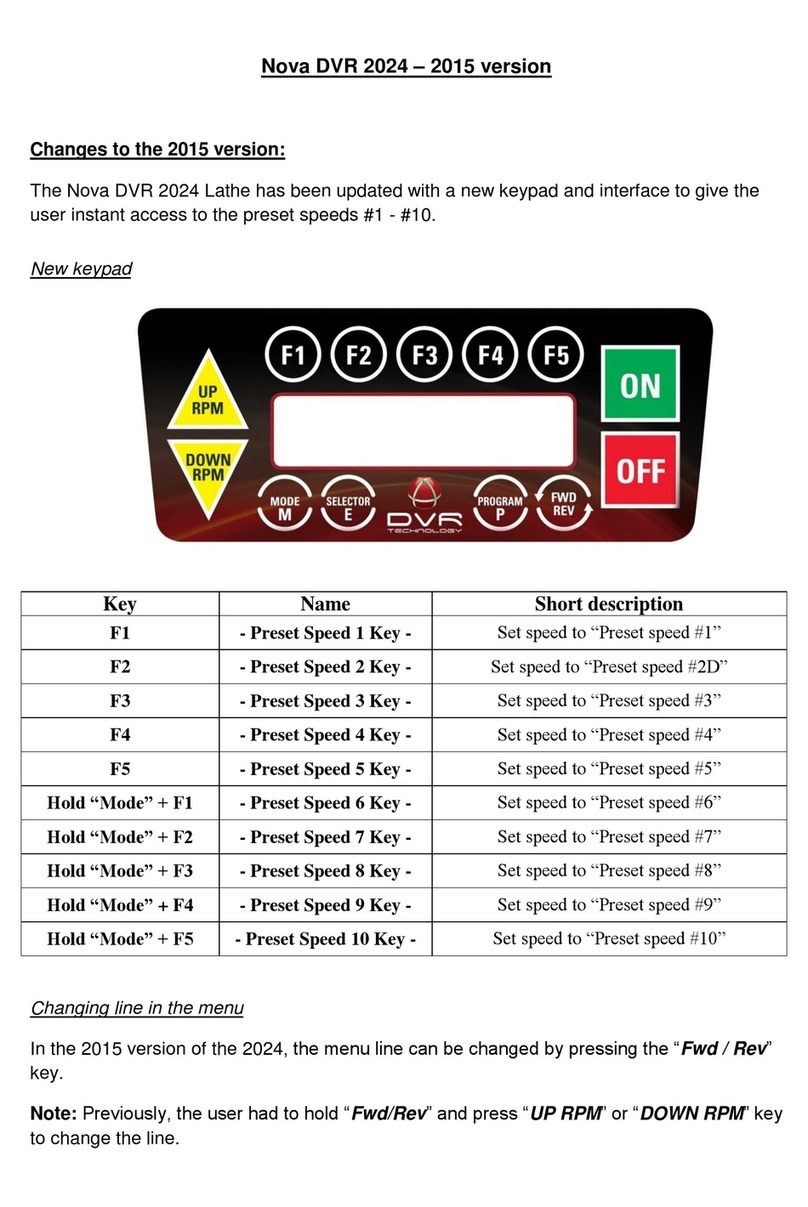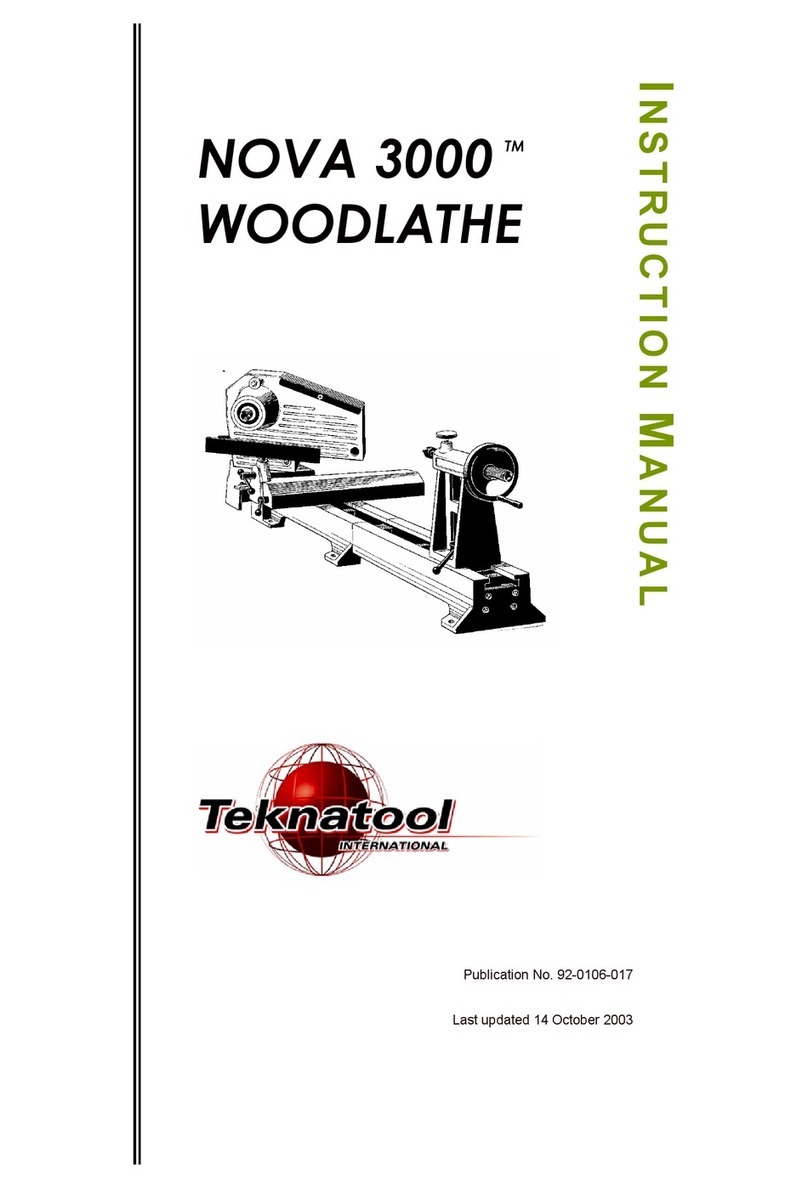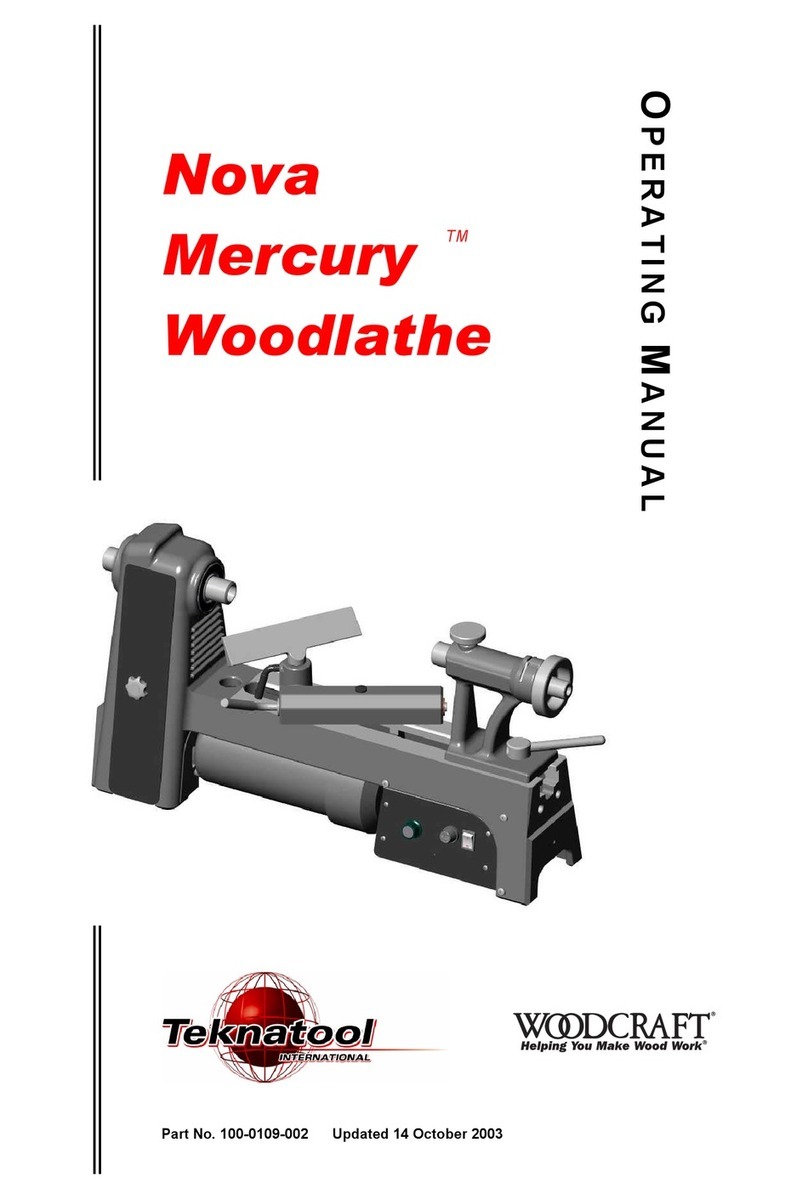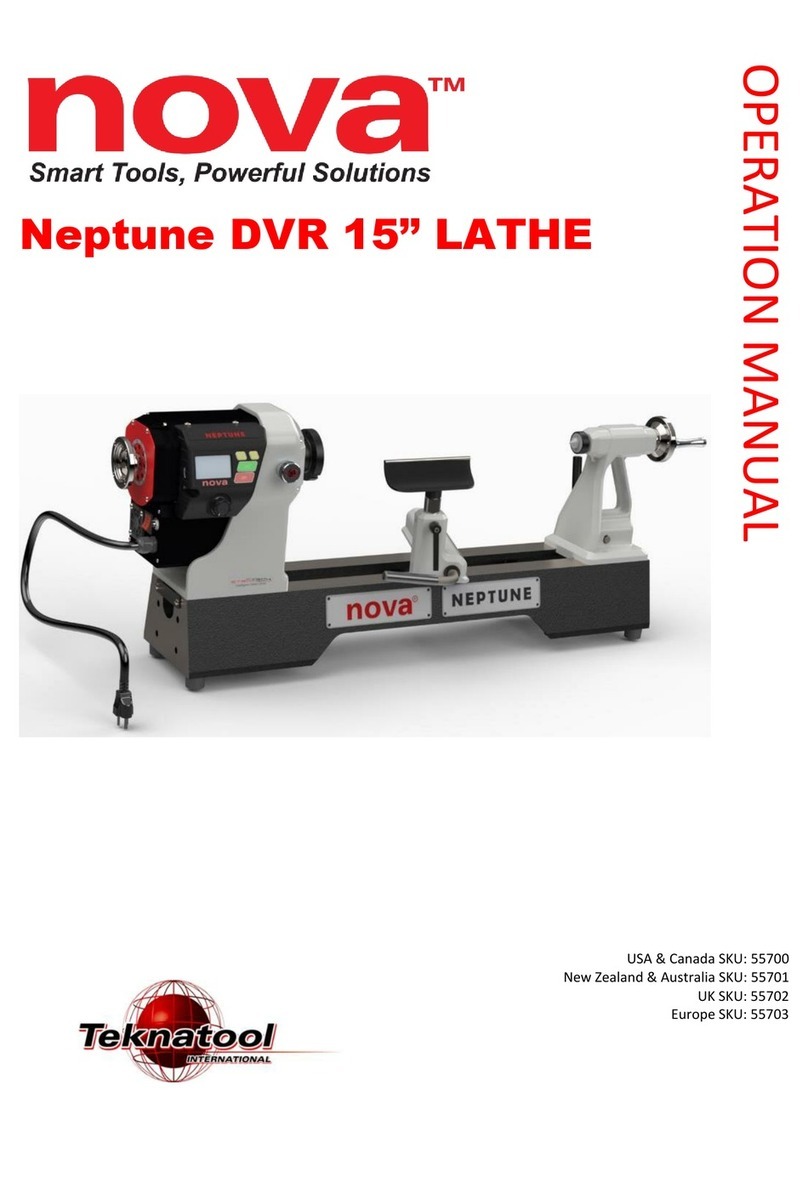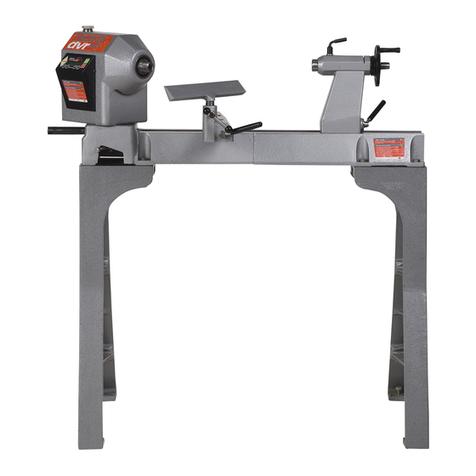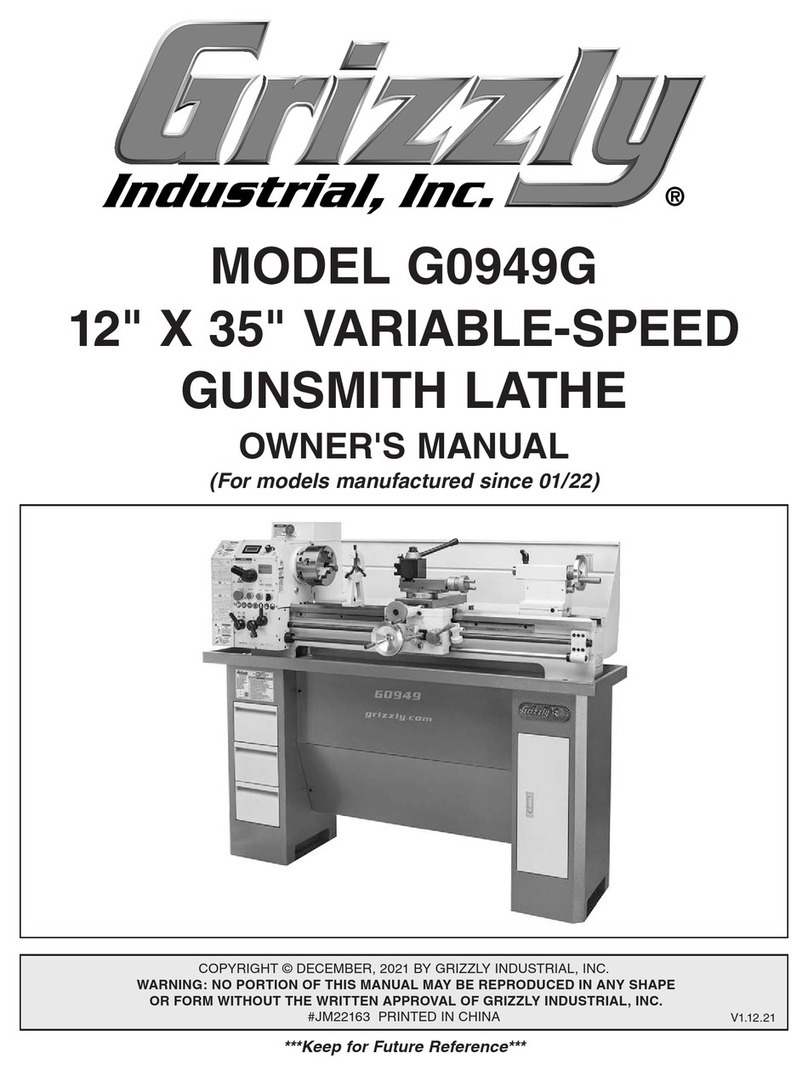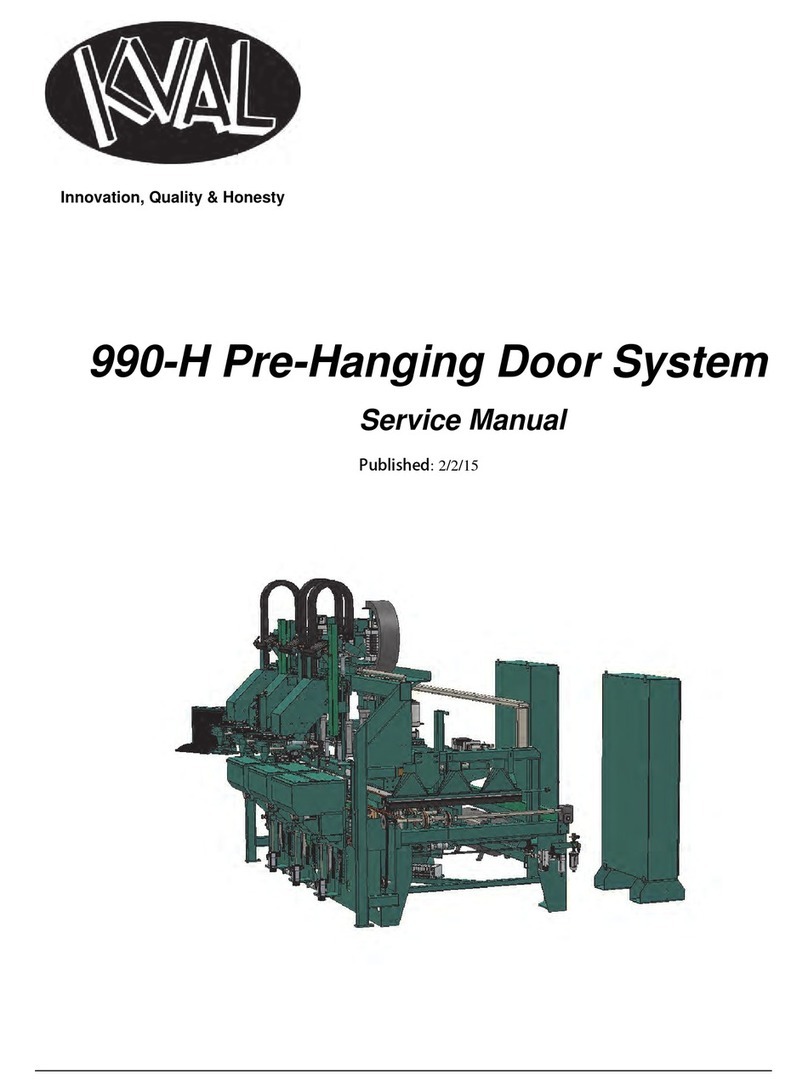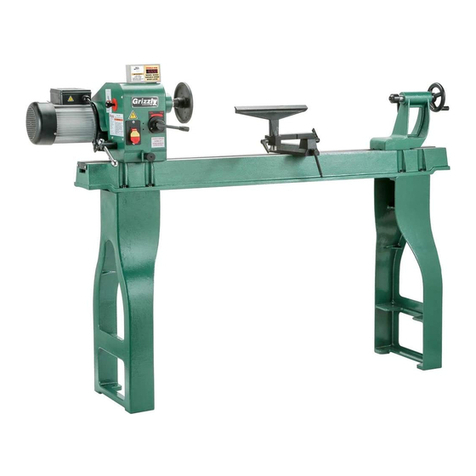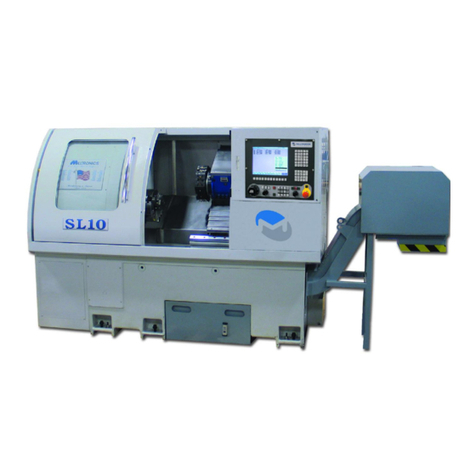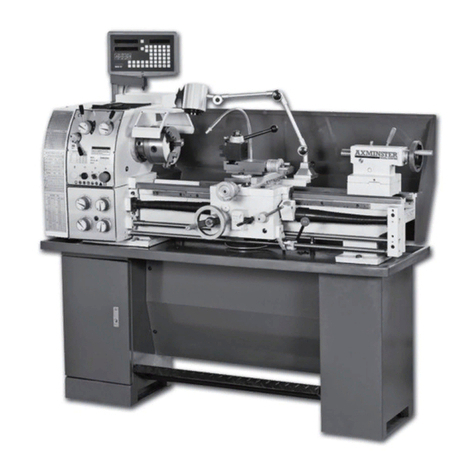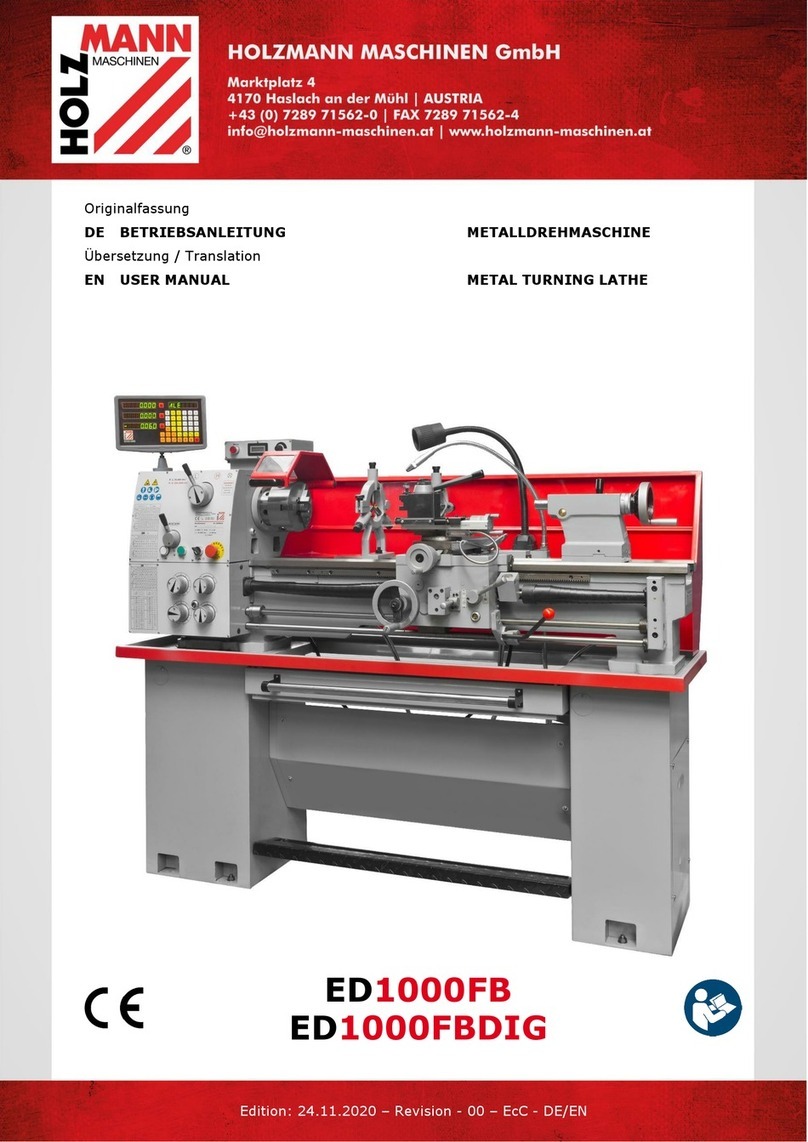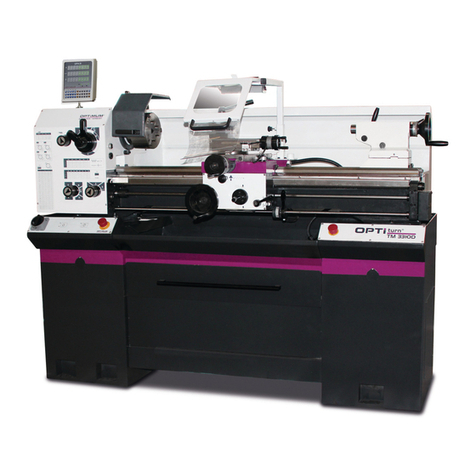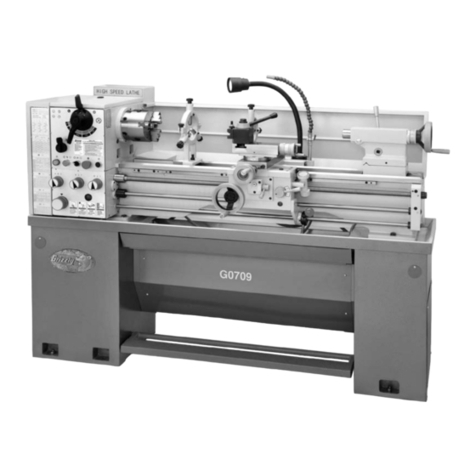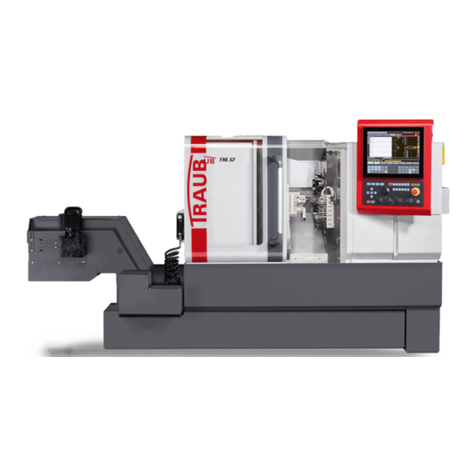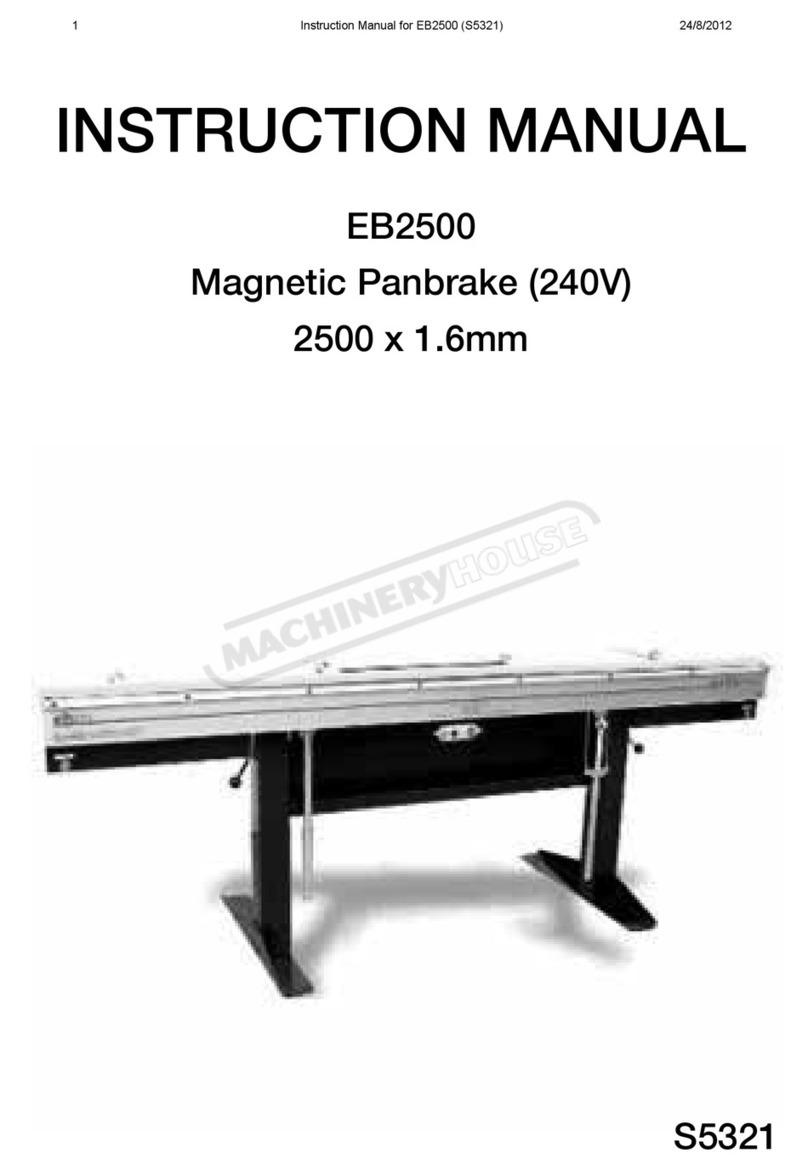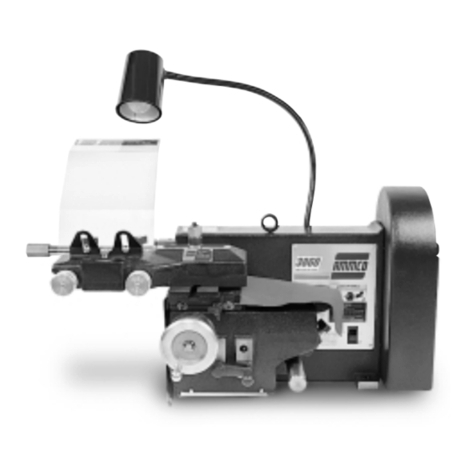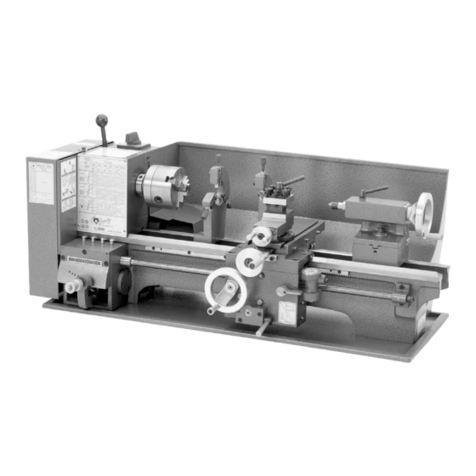
ADDITIONAL SAFETY
RULES
FOR WOODLATHES
VI
#
1.
WARNING: DO NOT operate your lathe until it is
completely assembled and installed according to the
instructions.
2.
IF
YOU ARE NOT thoroughly familiar with the
operation of wood lathes, obtain advice from your
supervisor, instructor or other qualified person.
Instruction from
a
professional woodturning
instructor is strongly recommended.
3. MAKE SURE wiring codes and recommended
electrical connections are followed and that the
machine is properly grounded.
4.
NEVERturntheIathe'ON'beforeclearing the latheof
all objects (tools, scraps of wood, etc).
5.
ALWAYS stand to one side of revolving wood where
possible.
EXAMINE set
-
up carefully before turning on the
.,.,power.
7. MAKESURE tool rest height is adjusted properly.
8.
MAKE SURE tool rest is adjusted as close to the
9. ROTATE workpiece by hand to check clearance
10. NEVERadjustthetool restwhileworkpieceisturning.
11. REMOVE the tool rest before sanding or polishing.
12. WHEN TURNING between centres MAKESURE the
tailstock centre is snug against the workpiece and
locked. Thetailstock centreshould belubricated
if
it
is not a revolving/live/ball bearing centre. Suitable
lubricants are beeswax or parafin wax.
13. NEVER drive workpiece into drive centre when drive
centreis
in
headstock. Setdrivecentreintoworkpiece
with a soft mallet prior to installing it into the
headstock.
14.
NEVERattempt
to
drivecentre pieces intowood using
he tailstock quill action. Impaction of centre into
--wood must bedonewith a malletpriorto installation
*
between centres
in
the lathe. Secure work between
centreswith lightpressure from tailstock quill action.
See operation section.
15.
NEVER loosen tailstock spindle or tailstock while
workpiece is turning.
16. WHEN faceplate turning, MAKE SURE workpiece is
Securely fastened to the faceplate and that
appropriatesizefaceplateisusedto properlysupport
workpiece.
workpiece as possible.
before engaging power.
17. WHEN faceplate turning, MAKE SURE the screw
fasteners do not interferewith the turning tool at the
finished dimension of the workpiece.
18. ROUGH CUT workpiece as close as possible to
finished shape beforeinstalling
on
faceplate.
19. TIGHTEN all clamp handles beforeoperating.
20. EXAMINE workpiece for flaws and test glue joints
before placing workpiece in lathe.
21. NEVER use spindle turning chisels for faceplate/
headstock only mounted work. Using them for
faceplate
turning
could result
in
spindle chisel
grabbing the workpiece pulling the chisel from your
control and being flung
in
any direction.
22. WHEN roughing off,
DO
NOT jam tool (chisel) into
workpiece or take too biga cut.
23.
USElowest speed when starting a new workpiece.
24. ALWAYS operate the lathe at the recommended
speeds. Consult owner's manual for suggested
speeds.
25. MAKE all adjustments with the power
'OFF'.GRanqe
26. DISCONNECTlathefrompowersourcewhen making
27. DISCONNECTlathefrompowgrsourceandclean the
28. MAKESUREthe work area is cleanedbeforeleaving
29. SHOULD any partof your lathe bemissing. damaged
or fail
in
any way, or any electrical component fail to
perform properly, shut off switch and remove plug
from the power supply outlet. Replace missing,
,
damaged or failed parts before resuming operation.
i
-.when4athe+-
--
repairs.
machine before leaving it.
I\
the machine.
30. CAUTI0N:To reducetheriskofinjury,ALWAYSwear
safety glasses and face and head protection when
operatingwoodlathe.
31.
ADDlTlONALINFORMATIONregardingthesafeand
properoperation ofthis product is available from the
National Safety Council,
444
N. Michigan Avenue,
Chicago, IL60611
in
theAccident Prevention Manual
of Industrial Operations and also
in
the Safety Data
Sheets providedby the NSC. Please also refer to the
American National Standards Institute ANSI 01.1
Safety RequirementsforWoodworking Machinesand
the
U.S.
Department of Labour OSHA 1910.213
Regulations.
